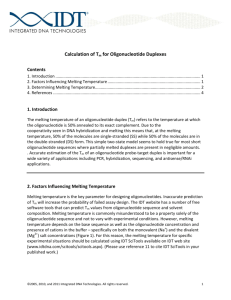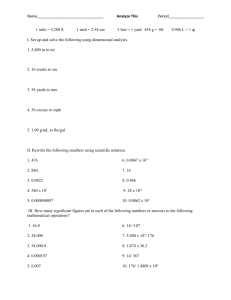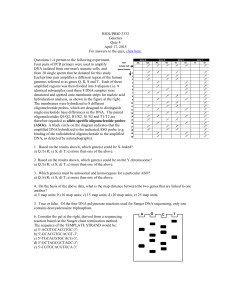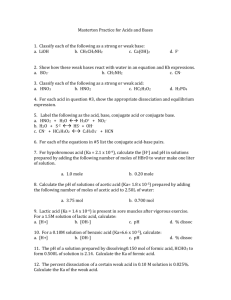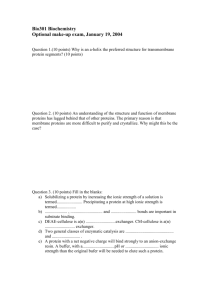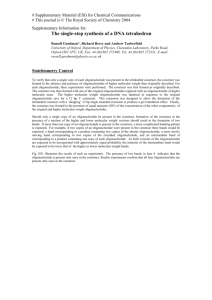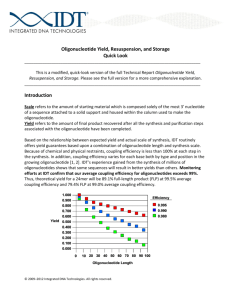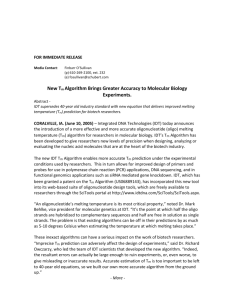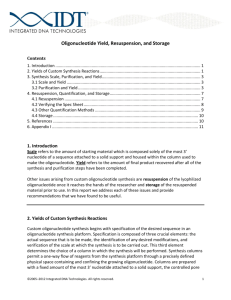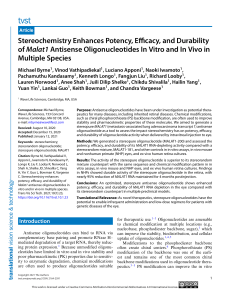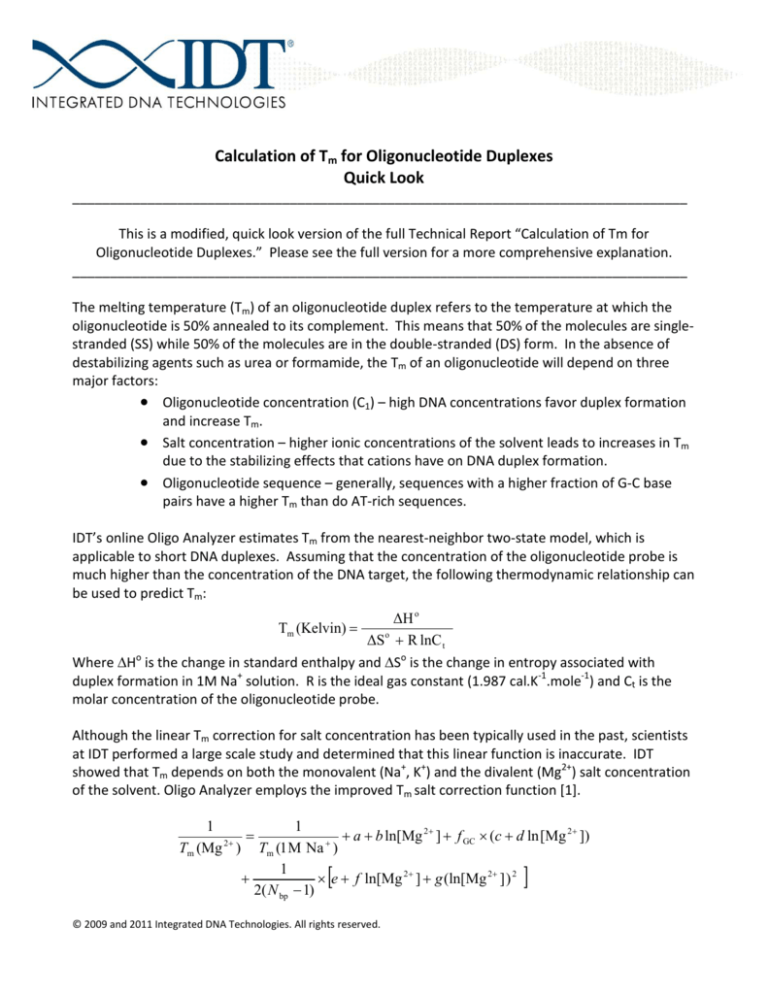
Calculation of Tm for Oligonucleotide Duplexes
Quick Look
__________________________________________________________________________________
This is a modified, quick look version of the full Technical Report “Calculation of Tm for
Oligonucleotide Duplexes.” Please see the full version for a more comprehensive explanation.
__________________________________________________________________________________
The melting temperature (Tm) of an oligonucleotide duplex refers to the temperature at which the
oligonucleotide is 50% annealed to its complement. This means that 50% of the molecules are singlestranded (SS) while 50% of the molecules are in the double-stranded (DS) form. In the absence of
destabilizing agents such as urea or formamide, the Tm of an oligonucleotide will depend on three
major factors:
• Oligonucleotide concentration (C1) – high DNA concentrations favor duplex formation
and increase Tm.
• Salt concentration – higher ionic concentrations of the solvent leads to increases in Tm
due to the stabilizing effects that cations have on DNA duplex formation.
• Oligonucleotide sequence – generally, sequences with a higher fraction of G-C base
pairs have a higher Tm than do AT-rich sequences.
IDT’s online Oligo Analyzer estimates Tm from the nearest-neighbor two-state model, which is
applicable to short DNA duplexes. Assuming that the concentration of the oligonucleotide probe is
much higher than the concentration of the DNA target, the following thermodynamic relationship can
be used to predict Tm:
ΔH o
Tm (Kelvin) =
ΔS o + R lnC t
Where ∆Ho is the change in standard enthalpy and ∆So is the change in entropy associated with
duplex formation in 1M Na+ solution. R is the ideal gas constant (1.987 cal.K-1.mole-1) and Ct is the
molar concentration of the oligonucleotide probe.
Although the linear Tm correction for salt concentration has been typically used in the past, scientists
at IDT performed a large scale study and determined that this linear function is inaccurate. IDT
showed that Tm depends on both the monovalent (Na+, K+) and the divalent (Mg2+) salt concentration
of the solvent. Oligo Analyzer employs the improved Tm salt correction function [1].
1
1
=
+ a + b ln[Mg 2+ ] + f GC × (c + d ln [Mg 2+ ])
2+
Tm (Mg ) Tm (1 M Na + )
1
+
× e + f ln[Mg 2+ ] + g (ln[Mg 2+ ] ) 2
2( N bp − 1)
[
© 2009 and 2011 Integrated DNA Technologies. All rights reserved.
]
Table 1. Parameters for Equation Above in Reciprocal Kelvins.
parameter
value (K-1)
standard error (K-1)
a
3.92 x 10-5
0.2 x 10-5
b
-9.11 x 10-6
0.5 x 10-6
c
6.26 x 10-5
0.4 x 10-5
d
1.42 x 10-5
0.08 x 10-5
e
-4.82 x 10-4
0.7 x 10-4
f
5.25 x 10-4
0.2 x 10-4
g
8.31 x 10-5
0.2 x 10-5
References
1. Owczarzy R, Moreira BG, et al. (2008) Predicting stability of DNA duplexes in solutions containing
magnesium and monovalent cations. Biochemistry, 47(19): 5336-5353.
© 2009 and 2011 Integrated DNA Technologies. All rights reserved.

